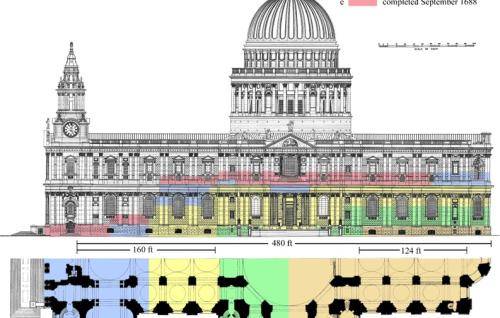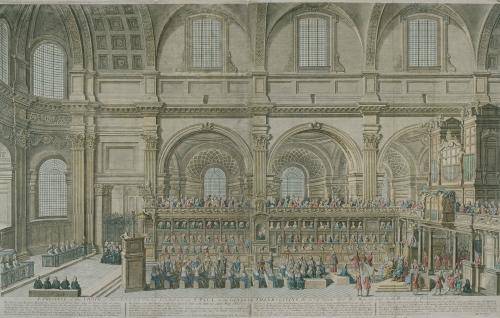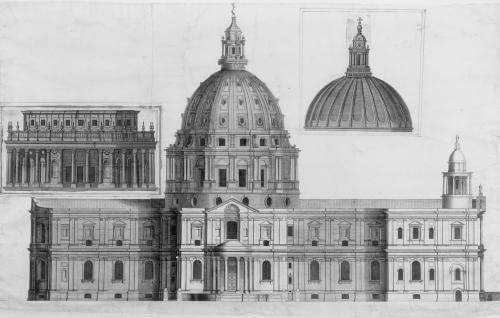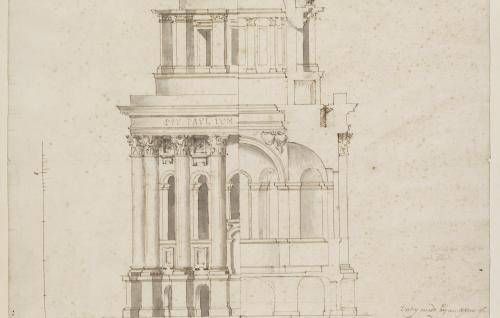1. Designs for the Great Model, 1673
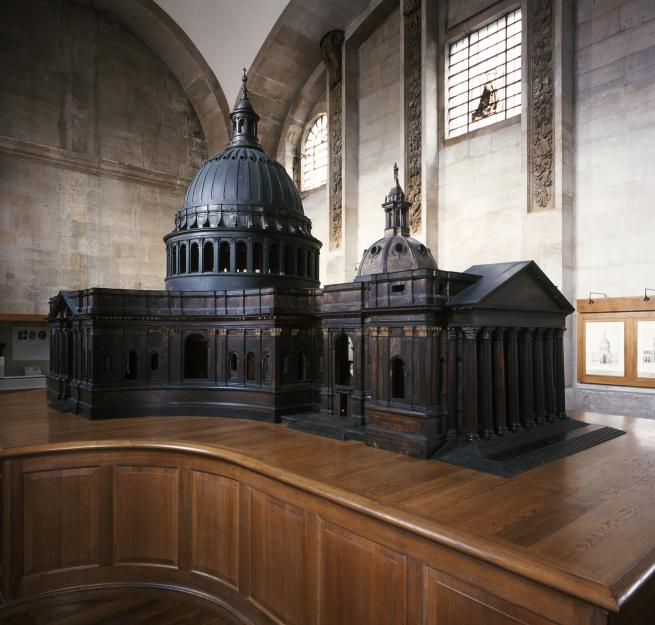
Studies for transept wall and entrance, with alternatives for the central recess. Drawn by Wren, c. 1673 (Ref. No. WRE/1/3)
The Wren Office Drawings
1673: Designs for the Great Model
Wren’s unrealised Great Model, now in the Cathedral’s Trophy Room, took about ten months to design from December 1672 to September 1673 and more than a year afterwards to build and decorate (figs 1, 2, 3).
Wren developed the Great Model from a proposal known as the Greek Cross, a design at All Souls College, Oxford, for a monumental, centrally planned cathedral on new foundations (fig. 4). He had prepared this design soon after presenting a scheme known as the First Model in May 1670 (fig. 5) In this proposal a long, ten-bay, choir-auditory, with covered walkways around its exterior and a domed vestibule at the west end (lost from the surviving model) would have been built over the foundations of the old eastern arm and crossing. Within about two years it was judged ‘not stately enough’, and a decision followed to rebuild on new foundations.
The Greek Cross scheme has a circular choir in one of four equal arms around a domed crossing. Each facade has a pedimented portico of six freestanding columns set close to the wall. It was probably this scheme that King Charles II approved on 16 December 1672 as the basis for the construction of a wooden model so large ‘that a Man might stand within it, the better to consider all the proportions of the same as well within as without’.
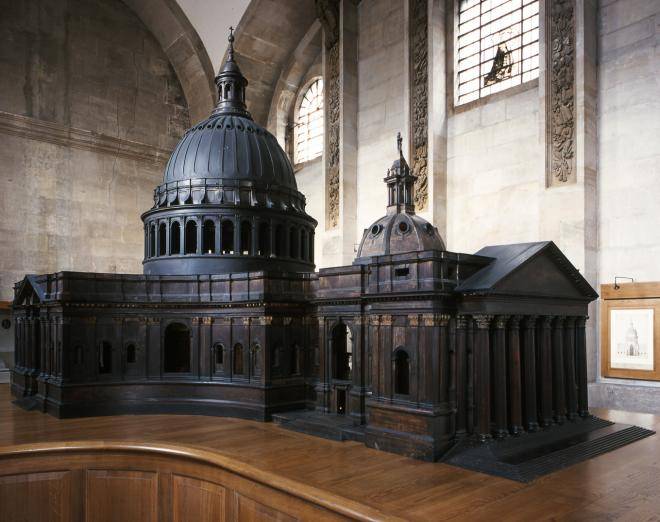
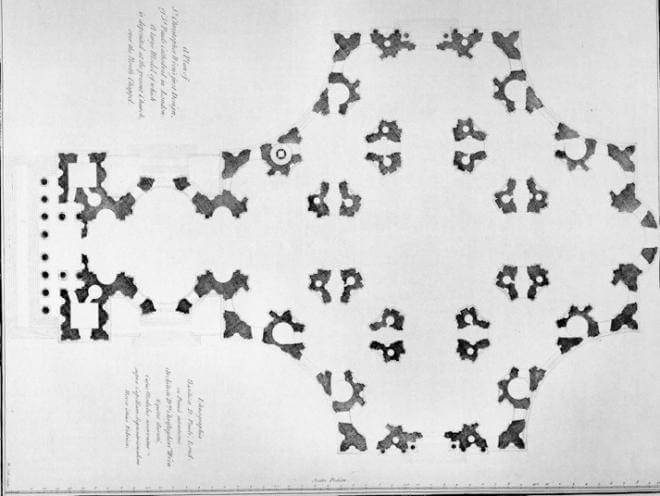
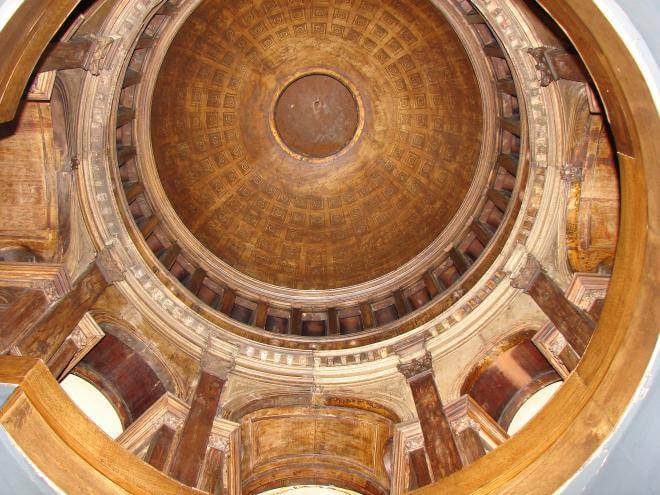
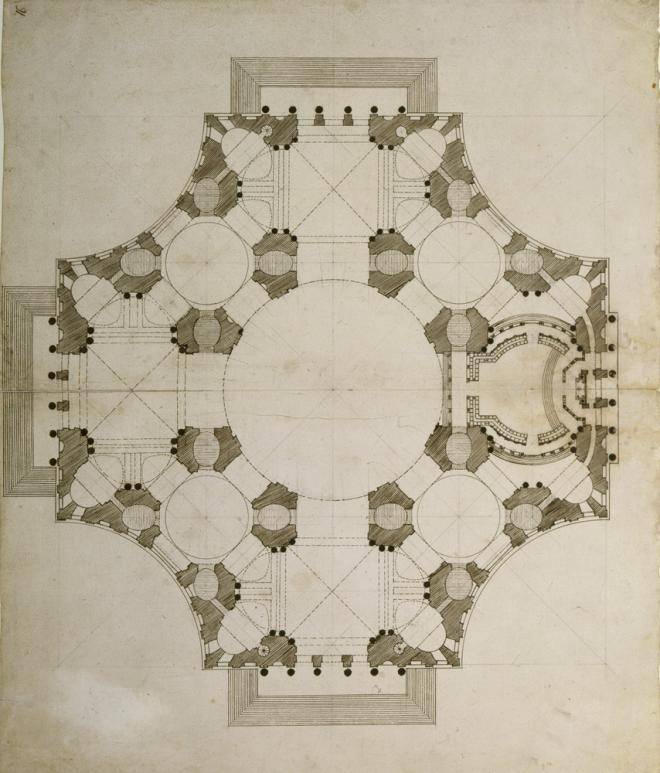
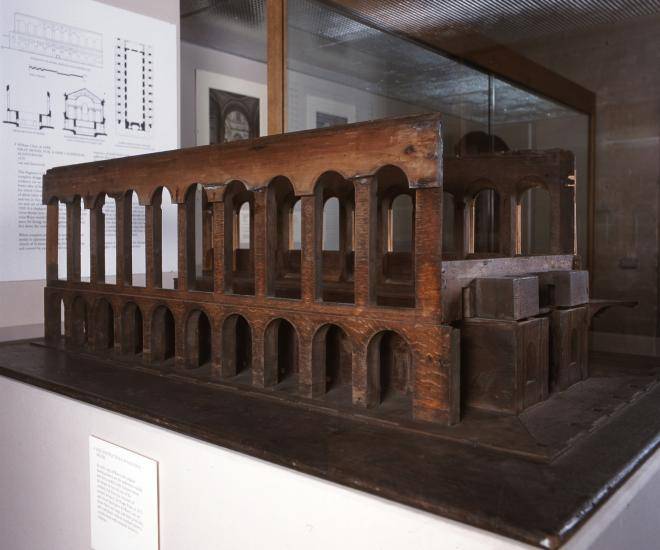
![Fig. 6. Preliminary plan of the north half of the west portico and west vestibule, drawn by Wren, 1673 (WRE/1/1 [D1])](/sites/default/files/styles/image_gallery_highlight/public/2022-03/Fig.%206.%20Preliminary%20plan%20of%20the%20north%20half%20of%20the%20west%20portico%20and%20west%20vestibule%2C%20drawn%20by%20Wren%2C%201673.jpg?itok=83QHDV0A)
The vast central circular space in the completed Great Model would have been approached through a portico of giant Corinthian columns and a western vestibule surmounted by a smaller dome. Grand portals would have provided access through the north and south transept fronts. These are the precursors of the transept fronts of the completed cathedral. The choir would have been in the oval space on the east side of the crossing.
No contemporary document records the rejection of the Great Model. This is not surprising as King Charles II had charged his new Commission (established 2 November 1673) with the rebuilding of the cathedral ‘according to the design and model’, which was to ‘remain as a perpetuall and unchangeable rule and direction for the conduct of the whole Work’. No dissatisfaction with the model was recorded when the Commissioners first met on 11 May 1674 and in the next few months carpenters began 'measuring and staking out the East Part of the ground of the Church according to the New Model'.
A decision to set aside the Model as the design on which construction should begin was probably made in the autumn on 1674. The Wren family memoir in 1750 states that some members of the cathedral’s chapter thought it ‘not enough of a Cathedral-fashion … to instance particularly, in that, the Quire was design’d Circular’. It would also have been apparent that the choir could not have been built separately from the supports of the dome. One of the reasons Wren’s revised scheme was commended in the royal warrant of 14 May 1675 was that it could be built in parts, beginning with the choir (see WRE/2).
Three drawings in the St Paul's Collection are for the Great Model (another six are at All Souls College, Oxford). WRE/1/1 dates to the early months of 1673 (fig. 6). It represents an initial phase in the enlargement of the Greek Cross plan by the addition of an arcaded portico which leads to a great west door for ceremonial use. Behind is a cross-vaulted western vestibule with doors for public entry on the north and south sides. Robert Hooke wrote in his diary on 8th February 1673 that Wren was adding a 'library Body and portico' to his designs for the Model. The 'library' would have been in the attic storey of the western body, reached by the stairs in the north-west corner pavillion. In the completed building the Library is at the upper level of the south side of the west end. Two further drawings, WRE/1/2 and WRE/1/3, explore the alternatives for the transept ends of the main body. They show Wren modifying the system of regular bays and engaged columns in WRE/1/1 by setting detatched columns wihtin a recessed central bay. The recess encloses the transept door and is crowned by an arch in the tympanum of the pediment.
References:
Geraghty 2007, nos.52–54;
Higgott 2004a, pp.186–89;
Geraghty 2007, p.51;
Wren Society 13, pp.26–28, p.204;
Parentalia 1750, p.282.
Links to the catalogue:
WRE/1/1 Preliminary plan of the north half of the west portico and west vestib
WRE/1/2 Study for transept wall and entrance
WRE/1/3 Studies for the transept wall and entrance, with alternatives, closer to the model





